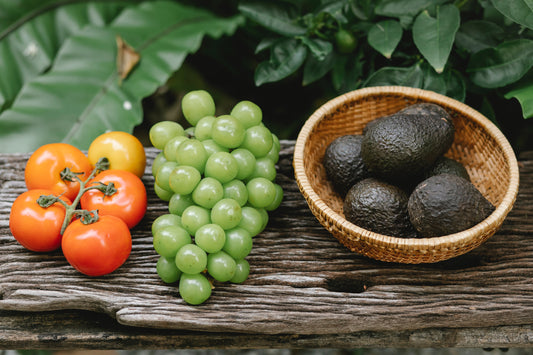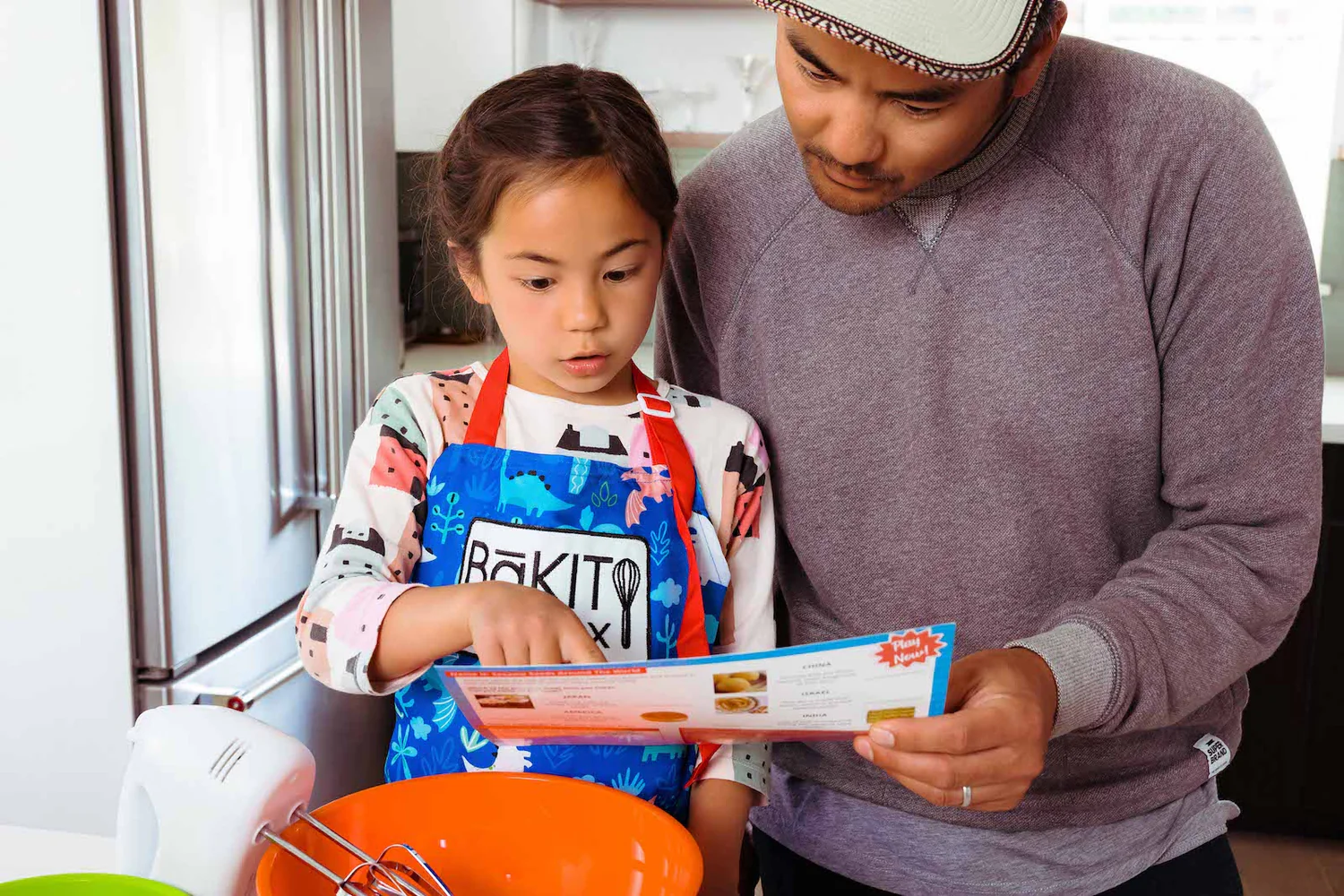Baking powder and baking soda are two of the most common ingredients you’ll come across while baking. They’re so closely named -- and look so similar to each other -- that it’s easy to mistake one for the other. But accidentally mixing these two up can lead to some less-than-stellar final products once they come out of the oven! Here’s everything you need to know about baking powder, baking soda, and the appropriate times to use each.
Why do we need baking soda and baking powder?
In many ways, the art of baking is an exact science. There’s no better example of this than the necessity of baking soda and baking powder in many recipes! Baking soda and baking powder are both
leavening agents, which means that they’re both used to help your baked goods rise while cooking. Both baking soda and baking powder are made with
sodium bicarbonate, a chemical that can create the gas carbon dioxide when combined with an acid. Think back to elementary school: this combination of a basic and acidic ingredient is the same chemical reaction that’s usually used to make those volcanoes erupt at the science fair! But in terms of baking, the release of carbon dioxide means that your baked goods start to “rise” and expand in the oven. In other words, leavening agents like baking soda and baking powder are key ingredients for making your bread rise, your cookies puffy, and your cakes light and fluffy,
not flat.
What’s the difference between baking soda and baking powder?
The difference between baking soda and baking powder comes down to their composition. Baking soda needs to be activated with another acidic ingredient to initiate the desired rising effect in your baked good, while baking powder already has the acidic component included.
Baking Soda
=

Baking soda is made purely of sodium bicarbonate. It needs to be combined with an acid in order to start that chemical reaction that releases carbon dioxide into your baked goods. Some common acidic ingredients that are commonly used in baking include vinegar, lemon juice, buttermilk, and cream of tartar. Don’t skip these ingredients if your recipe calls for them; they’re crucial to activating your baking soda!
When should you use baking soda?
Recipes will usually call for baking soda when they also include an acidic ingredient. Some good examples of this would include snickerdoodle cookies, which use cream of tartar, and Irish soda bread, which uses buttermilk. Baking soda can also make your baked goods develop a nice caramelized brown color since it can change the pH of the batter.
Baking Powder

Baking powder contains both sodium bicarbonate and an acidic ingredient in powdered form, meaning that it has both ingredients necessary to start the chemical reaction necessary for proper leavening. But because it’s in a solid powder form, the reaction won’t begin until you add water and heat. Many baking powders also include cornstarch or other similar fillers, which can prevent the reaction from occuring prematurely. Baking powder is generally “double-acting,” meaning it activates in two stages: once when it is mixed with a liquid, then again when it’s heated.
When to use baking powder
Baking powder is generally used in recipes that don’t include or require an additional acidic ingredient. For example, many recipes for light, airy cookies and cakes use baking powder rather than baking soda.
Why some recipes require both baking powder and baking soda
So baking soda is a good leavening option for sweet treats with a bit of a tang or for desserts like cookies that you want to develop a nice brown caramelized color, while baking powder is a good leavening option for anything else that doesn’t require those elements. But what about when the recipe calls for both? Recipes will generally use both baking powder and baking soda when they require both a lot of leavening and a tangier taste. A good example of this would be buttermilk pancakes. If you use baking soda alone, it would completely neutralize the signature tang that comes from the acid in buttermilk, whereas adding baking powder lets the pancakes rise more without compromising the flavor profile. Adding baking soda in addition to baking powder is also a good way to help batters develop a deeper brown color for treats like cookies.
What If I Only Have One Or The Other?
Baking powder and baking soda are generally not excellent substitutes for each other since the addition or elimination of acid can change the final flavor profile of your baked goods. It could also change the texture of your baked goods slightly. Because baking soda is a more powerful leavening agent than baking powder, goods that use baking powder tend to be fluffier and lighter than those made with baking soda. For example, a
baking test conducted by BuzzFeed found that cookies made with baking soda spread well and crisped up nicely, whereas cookies made with baking powder ended up being “cakier” and did not brown as nicely. However, you can substitute baking powder for baking soda (and vice versa) in a pinch.
-
Using baking soda instead of baking powder: If your recipe calls for baking powder but you only have baking soda, add an acidic ingredient to your baking soda to activate it. Common acidic ingredients you can use include vinegar, lemon juice, lime juice, or buttermilk.
-
Using baking powder instead of baking soda: If your recipe calls for baking soda but you only have baking powder, use more baking powder than the amount the recipe calls for baking soda. Baking soda is about three to four times more powerful than baking powder.
Just be prepared for the taste to be a little off!
Frequently Asked Questions
1. How should I store my baking powder and baking soda?
Both baking powder and baking soda can lose their potency over time. For the best results, keep your baking powder and baking soda in a cool, dry area away from direct sunlight.
2. How do I know if my baking powder is still good?
An opened container of baking powder can go bad in about six months, which can lead to flat baked goods. This is especially true if it’s exposed to moisture. To test whether your baking powder is still active, simply mix a teaspoon or two in a cup of hot water. If the mixture starts to bubble and fizz, it’s still active and good to use in baking. If nothing happens, it’s not going to be an effective leavening agent -- time to buy a new can!
3. How do I know if my baking soda is still good?
An open container of baking soda has about the same shelf-life as an opened baking powder (six months). It could also lose its potency if it has been exposed to an acidic ingredient during storage. To test whether your baking soda is still active, mix a small amount of baking soda with an acidic ingredient like lemon juice or vinegar. If it begins to bubble, it’s still good to use in your recipe.
4. What else can I use instead of baking powder or baking soda?
Baking powder and baking soda are not the only leavening agents out there. So if you don’t have either baking powder or baking soda on hand, you could consider using another leavening agent. Other common leavening ingredients and options for adding structure to your baked good include self-rising flour, yeast, whipped egg whites, or club soda. However, be aware that these substitutes will probably not give you the same result as what the recipe originally calls for!
Conclusion
While baking powder and baking soda are both made from sodium bicarbonate, their different chemical compositions can lead to very different results during baking. Stick with what your recipe calls for whenever possible to make cookies, cakes, bread, and more with the right texture and taste for your needs.
Image credits: Featured image credit - Photo by
Kaboompics .com from
Pexels Image 2 - Photo by
Paula Anne from
Pexels Image 3 - Photo by
Ronmar Lacamiento from
Pexels
 Baking soda is made purely of sodium bicarbonate. It needs to be combined with an acid in order to start that chemical reaction that releases carbon dioxide into your baked goods. Some common acidic ingredients that are commonly used in baking include vinegar, lemon juice, buttermilk, and cream of tartar. Don’t skip these ingredients if your recipe calls for them; they’re crucial to activating your baking soda!
Baking soda is made purely of sodium bicarbonate. It needs to be combined with an acid in order to start that chemical reaction that releases carbon dioxide into your baked goods. Some common acidic ingredients that are commonly used in baking include vinegar, lemon juice, buttermilk, and cream of tartar. Don’t skip these ingredients if your recipe calls for them; they’re crucial to activating your baking soda!
 Baking powder contains both sodium bicarbonate and an acidic ingredient in powdered form, meaning that it has both ingredients necessary to start the chemical reaction necessary for proper leavening. But because it’s in a solid powder form, the reaction won’t begin until you add water and heat. Many baking powders also include cornstarch or other similar fillers, which can prevent the reaction from occuring prematurely. Baking powder is generally “double-acting,” meaning it activates in two stages: once when it is mixed with a liquid, then again when it’s heated.
Baking powder contains both sodium bicarbonate and an acidic ingredient in powdered form, meaning that it has both ingredients necessary to start the chemical reaction necessary for proper leavening. But because it’s in a solid powder form, the reaction won’t begin until you add water and heat. Many baking powders also include cornstarch or other similar fillers, which can prevent the reaction from occuring prematurely. Baking powder is generally “double-acting,” meaning it activates in two stages: once when it is mixed with a liquid, then again when it’s heated.






